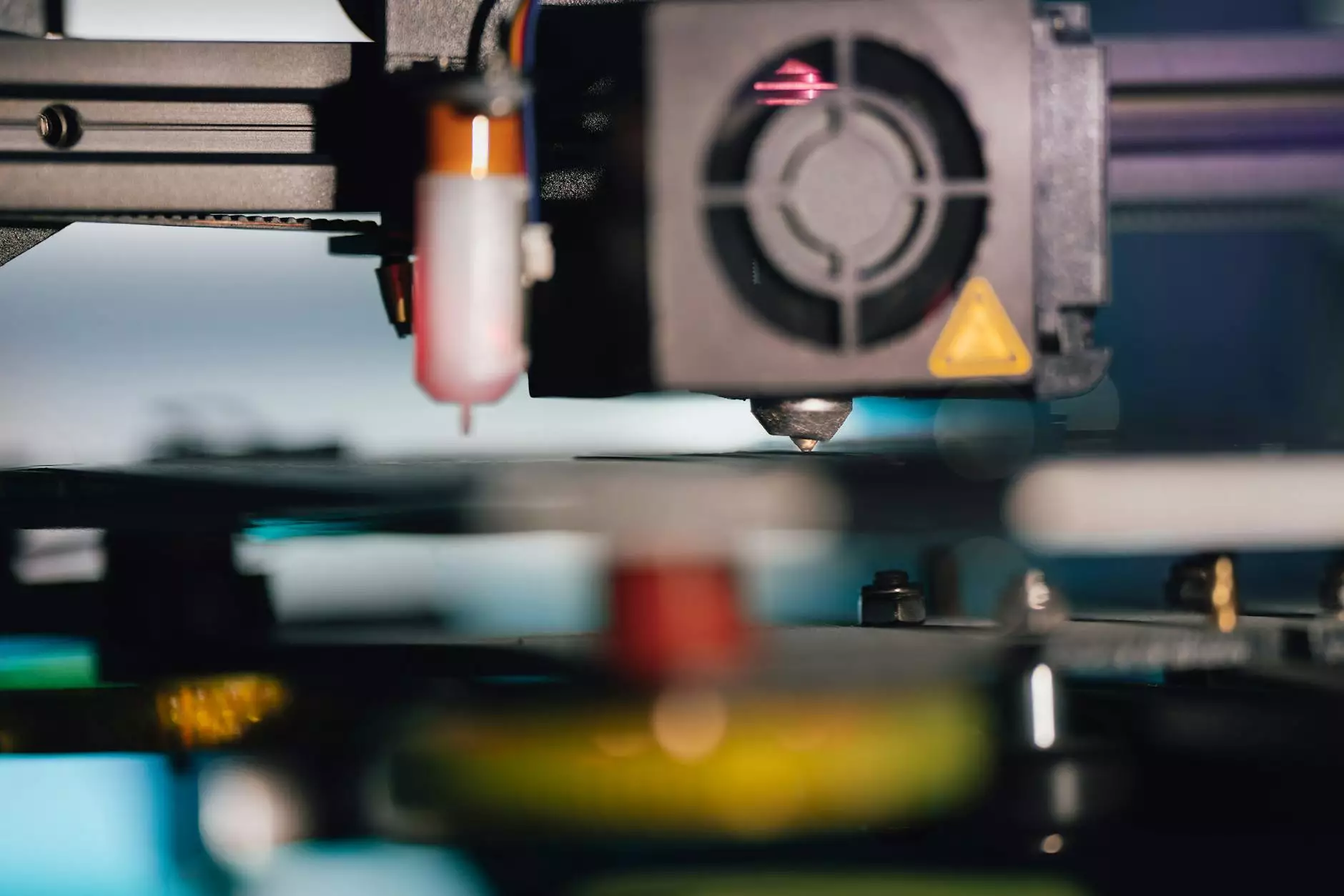Mastering the Art of How to Make Multi Color 3D Prints: A Complete Guide for Makers and Professionals

In the rapidly evolving world of 3D printing, achieving vibrant, multi-colored prints stands as one of the most exciting advancements. Multi color 3D printing opens up new avenues for creativity, allowing hobbyists, designers, and manufacturers to produce highly detailed, realistic, and visually appealing models. This comprehensive guide will walk you through how to make multi color 3D prints, covering everything from fundamental techniques to advanced strategies, ensuring you can create stunning multi-colored 3D objects with confidence.
Understanding the Basics of Multi Color 3D Printing
Before diving into specific methods, it's essential to understand the core principles behind how to make multi color 3D prints. Unlike single-material printing, multi-color printing involves either physically combining different filaments or employing sophisticated printing processes to seamlessly blend or switch between colors. Here are some key concepts:
- Color Changing Technologies: Various technologies enable color changes during printing, including multi-extruder setups, color mixing hotends, and filament-changing methods.
- Material Compatibility: Not all filaments are compatible; selecting the right materials ensures proper adhesion and color fidelity.
- Print Design Considerations: Designing models with multi-color features requires thoughtful planning, including color placement and segmentation.
Popular Methods to Achieve Multi Color 3D Prints
There are several effective techniques for achieving multi-color effects in 3D prints. Each method has its own advantages, limitations, and technical requirements. Here, we analyze the most prominent approaches:
1. Multiple Extruder 3D Printers
One of the most straightforward approaches involves using a 3D printer equipped with multiple extruders, each loaded with a different filament color. This setup allows for precise control over color changes at specified layers or regions.
- Advantages: High color accuracy, precise control, seamless color transitions, compatibility with complex models.
- Limitations: Higher cost, complex calibration, increased setup complexity, need for multi-material print management.
2. Toolpath-Based Color Change (Pausing & Filament Swapping)
This manual method involves pausing the print at predetermined layers to swap filaments, effectively switching colors mid-print. It’s suitable for hobbyists or small-scale production.
- Advantages: Cost-effective, simple to implement, no need for specialized hardware.
- Limitations: Less precision, visible layer changes, potential for misalignment or quality issues.
3. Color Mixing Hotends (Single Nozzle with Filament Blending)
Advanced hotend systems, such as the Mosaic Palette or Cyclops hotends, enable blending of multiple filaments within a single nozzle, creating a spectrum of colors during printing.
- Advantages: Smooth color gradients, reduced filament swaps, compact hardware.
- Limitations: Expensive, complex calibration, limited color palette depending on hardware.
4. Filament Swapping and Post-Processing
In some cases, creating multi-colored prints involves printing different sections with different filaments and assembling or coloring post-print. This is often used for larger models or when multi-material hardware isn't available.
- Advantages: Flexibility in color choices, less reliance on complex hardware.
- Limitations: Post-processing effort, potential for misalignment, possible compromises in aesthetic quality.
Step-by-Step Guide on How to Make Multi Color 3D Prints
Step 1: Planning Your Multi-Color Design
Successful multi-color 3D printing begins with thorough planning. Use CAD software or specialized slicing tools to model your object with clear color zones. Incorporate color change points into your design, whether for layer pauses or filament swaps.
Step 2: Preparing Your 3D Printer and Materials
Ensure your printer is equipped with the necessary hardware, such as multiple extruders or advanced hotends, depending on your chosen method. Select high-quality, compatible filaments in the desired colors, considering factors like color fastness, adhesion, and finish quality.
Step 3: Slicing and Configuring for Multi-Colored Prints
Use slicing software that supports multi-material or multi-color printing, such as Cura, PrusaSlicer, or Simplify3D. Set specific layer change points or toolpaths where filament swapping or pauses will occur. Adjust print settings for optimal adhesion and color fidelity.
Step 4: Executing the Print – Techniques and Tips
For multi-extruder printers, load filaments into each extruder, calibrate for each tool, and start printing. For manual filament swaps, carefully pause the printer at designated layers, swap filaments seamlessly, and resume. For color mixing hotends, ensure proper calibration for consistent blending.
Step 5: Post-Processing and Finishing
Once your print is complete, remove any support structures carefully to avoid damaging multi-colored regions. You can enhance colors through sanding, painting, or coating if necessary, but often, the pursuit of multi-color 3D printing aims for raw color vibrancy.
Best Practices for Achieving High-Quality Multi Color 3D Prints
- Calibrate Your Printer: Proper calibration ensures accurate color placement and smooth transitions.
- Optimize Print Speed and Temperature: Lower speeds and correct temperatures improve color accuracy and surface finish.
- Use High-Quality Filaments: Premium filaments yield vibrant, consistent colors with minimal defects.
- Plan Layer Changes Carefully: Precise planning minimizes misalignments and visible artifacts.
- Experiment with Color Combinations: Test different hues and blending techniques to achieve desired effects.
Innovations and Future Trends in Multi Color 3D Printing
The field of how to make multi color 3D prints is continuously advancing, driven by technological innovation. Some promising developments include:
- Automated Multi-Material Print Farms: Large-scale systems capable of complex multi-color, multi-material print runs with minimal human intervention.
- Improved Color Mixing Technologies: Hotends capable of producing a near-infinite palette of colors through seamless blending.
- AI-Driven Slicing and Design Optimization: Software that automatically suggests optimal color placements and layer change strategies.
- Bio-Integrated and Functional Multi-Color Objects: Combining aesthetics with functionality, such as multi-colored medical implants or wearable tech components.
Why Learning How to Make Multi Color 3D Prints is a Valuable Skill for Your Business
Mastering this technique unlocks countless opportunities in commercial, artistic, and industrial sectors:
- Enhanced Product Appeal: Multi-colored prints attract more customers with vibrant visuals.
- Customization Customization: Personalized items with intricate color schemes resonate deeply with end-users.
- Competitive Differentiation: Unique multi-colored designs set your products apart in a crowded market.
- Cost Savings: Advanced multi-color printing reduces the need for post-print painting or assembly, saving time and labor.
Get Started with Your Multi Color 3D Printing Journey Today
Whether you're a hobbyist artist or a professional manufacturer, understanding how to make multi color 3D prints is essential to elevate your creations. Invest in the right hardware, learn advanced software techniques, and experiment relentlessly. The potential for creativity and commercial success is only limited by your imagination.
Remember, mastery in multi-color 3D printing not only enhances your craft but also opens doors to innovative designs and business growth. Embrace the challenge, keep learning, and watch your multi-color projects come to vibrant life!
Explore More Resources and Equipment at 3DPrintWig
At 3DPrintWig, we specialize in providing cutting-edge 3D printing equipment, filaments, and expert advice to support your multi-color printing pursuits. Browse our categories and stay updated with the latest innovations to propel your business forward.









